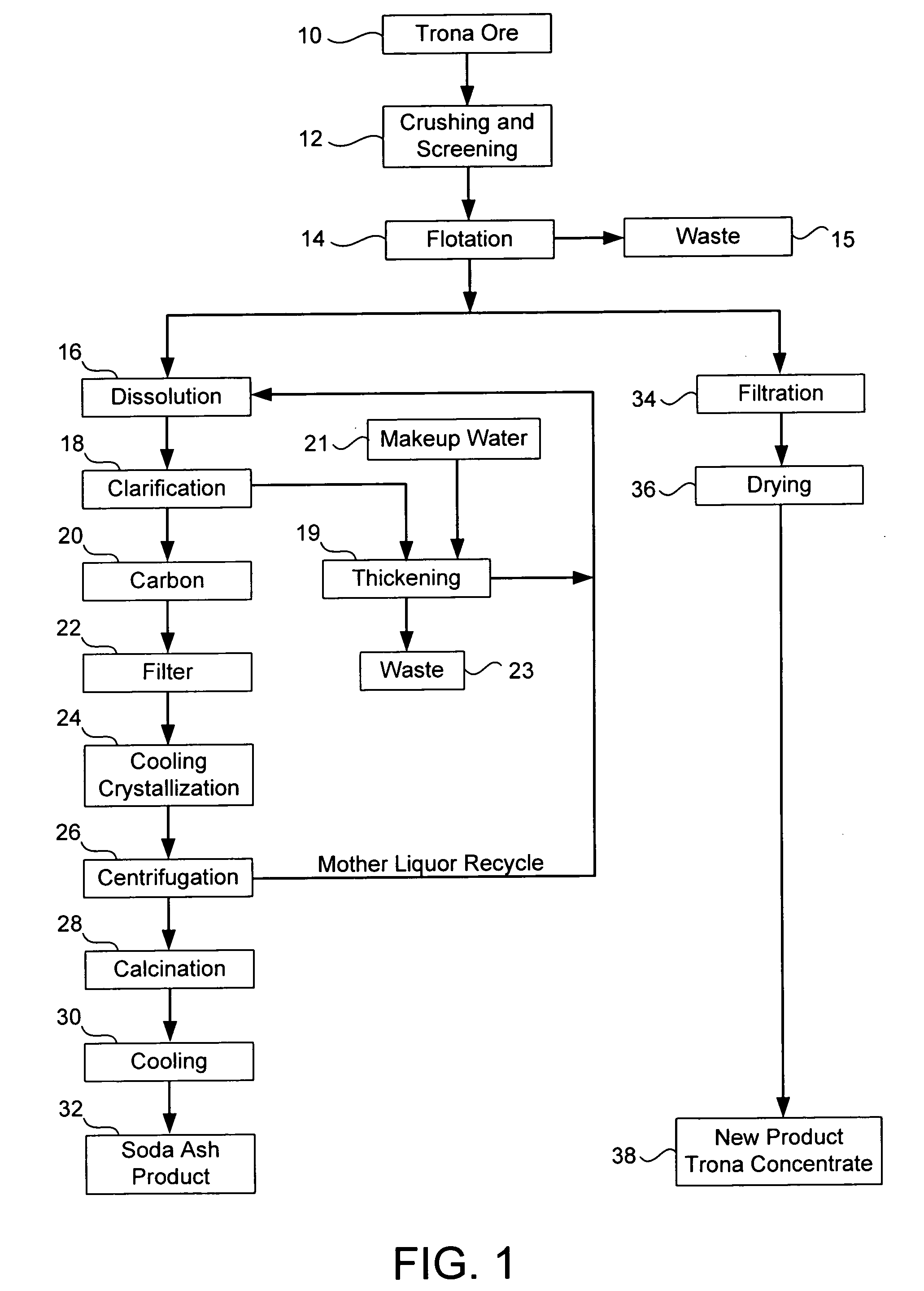Purification of trona ores
a technology of trona ores and trona ores, which is applied in the field of processing of trona ores, can solve the problems of increasing energy consumption, and high operating costs, and achieves the effect of affecting the solubility of trona
- Summary
- Abstract
- Description
- Claims
- Application Information
AI Technical Summary
Benefits of technology
Problems solved by technology
Method used
Image
Examples
example 1
[0042] About 10 ml of a 1 wt % dodecylamine hydrochloride aqueous solution was mixed (low intensity mechanical mixing) with 1 ml kerosene (dodecylamine:kerosene was 1:8 by weight) to form an oil-in-water emulsion. A saturated trona brine was prepared, and then from 70 wt % to 75 wt % solids was added to the brine to form a solid trona ore suspension. The suspension was conditioned with the oil-in-water emulsion at emulsion contents of 0.94 kg dodecylamine per ton undissolved solids and 7.5 kg kerosene per ton undissolved solids for several minutes. Air bubbles were then injected and the gangue minerals floated. The trona concentrate had a purity of 99% and a recovery of more than 97% for a single stage bench scale flotation experiment.
example 2
[0043] A 1:4 weight ratio of dodecylamine to fuel oil was used following the same procedure described in Example 1. The suspension was conditioned with the oil-in-water emulsion at emulsion contents of 0.94 kg dodecylamine per ton undissolved solids and 2.8 kg kerosene per ton undissolved solids (a 1:4 weight ratio of dodecylamine to fuel oil) for several minutes. This flotation process produced a 99% trona concentrate with 96% recovery.
[0044] Shown in Table 1 below are exemplary results for flotation of gangue material of trona feed having different particle sizes and different content of insoluble gangue material in the feed using the emulsion and feed compositions of Examples 1 and 2, respectively. The feed composition relates to the raw material before conditioning. The concentrate composition refers to the composition remaining after removing the gangue material. The tailing composition refers to the float material. Thus, a high concentration of trona in the concentrate compos...
PUM
| Property | Measurement | Unit |
|---|---|---|
| Temperature | aaaaa | aaaaa |
| Temperature | aaaaa | aaaaa |
| Temperature | aaaaa | aaaaa |
Abstract
Description
Claims
Application Information
 Login to View More
Login to View More - R&D
- Intellectual Property
- Life Sciences
- Materials
- Tech Scout
- Unparalleled Data Quality
- Higher Quality Content
- 60% Fewer Hallucinations
Browse by: Latest US Patents, China's latest patents, Technical Efficacy Thesaurus, Application Domain, Technology Topic, Popular Technical Reports.
© 2025 PatSnap. All rights reserved.Legal|Privacy policy|Modern Slavery Act Transparency Statement|Sitemap|About US| Contact US: help@patsnap.com

